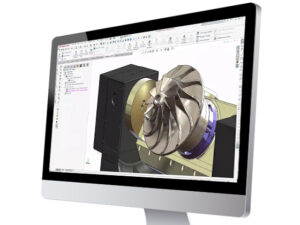This blog was originally authored by Dave Vedder, former Vice President of Engineering & Technology at GSC.
Over my 30 years of leading the creation of innovative new products, new processes, and new services, I’ve learned a thing or two about what makes for successful new product development and innovation. Let me tell you, it goes far beyond designing something you think is cool. When done well, product innovation solves a problem or a customer pain point.
In my experience, I’ve found businesses that excel in product innovation follow these five best practices.

5 Best Practices for Successful Product Development & Innovation
1. Their process is customer-focused.
By focusing on the customer, these best-in-class innovators develop and launch new products that offer new and unique benefits to their customers, offer a better value for the customers’ money, and better meet customers’ needs than competing products.
Best-in-class innovators do this by ensuring they have a deep, profound knowledge of their customers’ needs, including their unmet and unarticulated needs. They gain this understanding by working closely with their customers to identify their needs and problems through direct observation and in-depth interviews. They also rely on market research to define the product requirements.
Ultimately, the customer plays an integral part in the development process – from scoping to product definition to product validation to product service. Always take into account your customers are both internal to your business (e.g., manufacturing, suppliers, service, marketing, finance, quality) AND external (e.g., customers, end users, etc.).
2. Their process is front-end loaded.
Best-in-class innovators front load their product development by reducing their concept technical risk, concept marketing risk, and creating a draft of a detailed financial plan to reduce any headaches or rework these areas might cause along the way to a final product.
3. They continuously check and adjust to changes in customer needs or in the market.
So, you’ve identified a problem and you’re creating a solution, that should be enough, right? Not so. It’s important to ensure the product in development actually solves the identified problem in the manner the consumer prefers.
This can be done by either building a virtual prototype or a physical prototype to conduct a Customer Acceptance Test (CAT) to gain insights and feedback that will help you create an even better product overall.
4. Their product innovation teams are not research and development. Instead, they are a cross-functional team-based endeavor.
Best-in-class innovators assign specific members from across the business to their product innovation teams. Teamwork is a catalyst for innovation, in addition to a deep and profound understanding of the customer that is achieved through intense research and sharing observations.
5. They use a stage-gate process with formal reviews and signature approvals.
A stage-gate process is essentially a road map for moving a new-product project from idea to launch. Cross-functional teams are required to successfully complete outlined activities in each stage prior to obtaining management approval to proceed to the next stage of product development.
Stages can be ongoing simultaneously depending on risk management/assessments. Low-risk areas can proceed into the next phase prior to review and approval, whereas high-risk areas typically proceed sequentially.
In addition to a stage-gate process, best-in-class innovators set QCT targets for each innovation. QCT stands for quality or customer need targets, cost targets for piece part and project investment costs, and timing or schedule targets. Both internal and external customers must also be represented in the quality targets. The QCT ensures project audits are performed, lessons learned are identified, and a continuous improvement effort is implemented.
In Conclusion
These best practices for successful new product development and innovation will help you streamline your process and ensure you’re creating a product that truly solves your customers’ pain points. Try them to see how they can help you improve your new product development, and let me know if you’ve encountered any additional best practices that have positively impacted your process.
If you need more assistance than these best practices offer, we can help. Our industry experts and widely-experienced business consultants can help you optimize your process and identify areas that can benefit from improvements and lean manufacturing practices.
Share
Meet the Author

